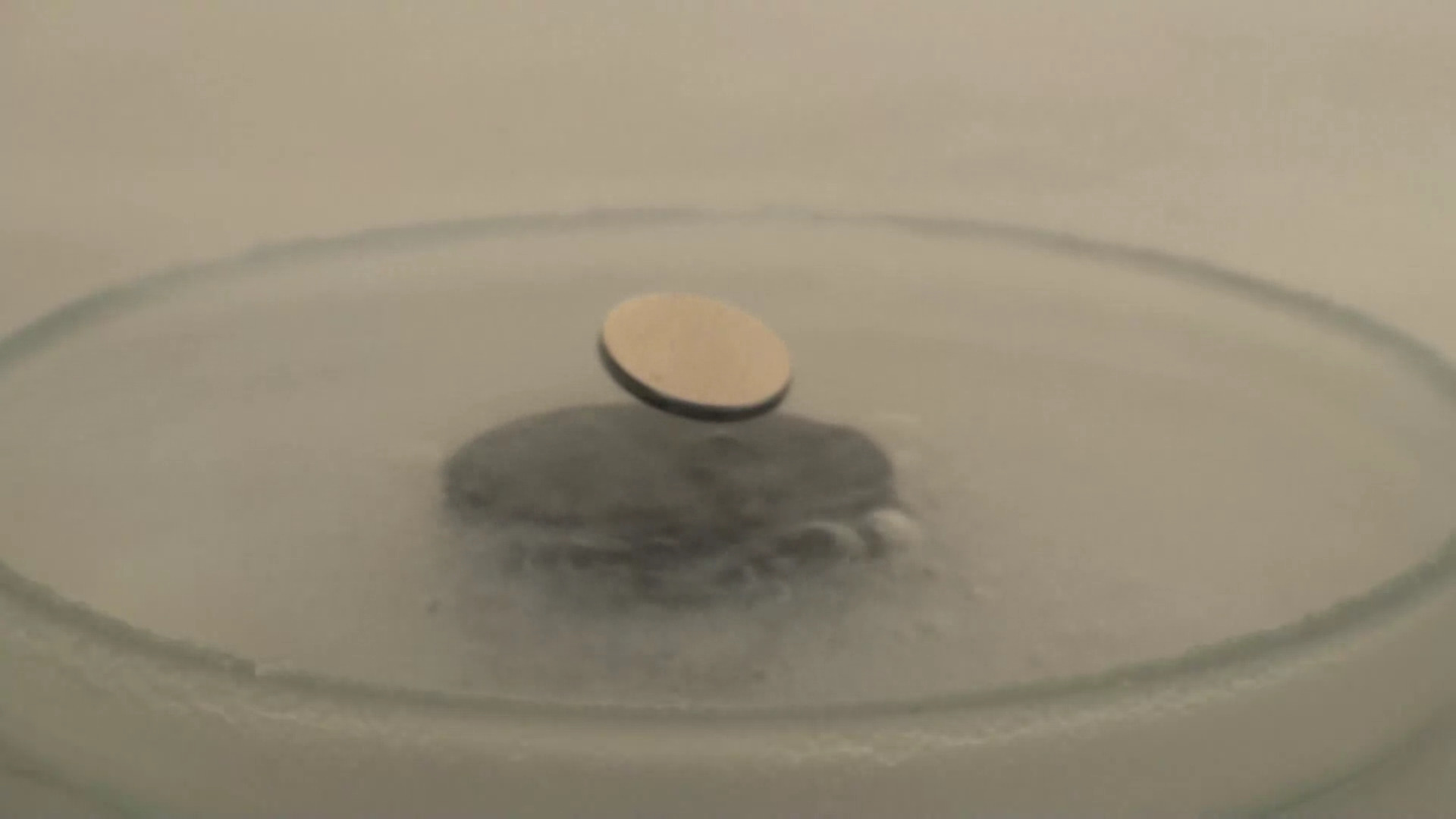We strongly suggest reading the superconductivity article before proceeding to read this one, as quantum locking as a phenomenon that is based on superconductors and superconductivity.
Quantum locking, or flux pinning, is the phenomenon where a superconductor is “pinned” in space when placed above a magnet. Flux pinning could be helpful in many operations in space, such as docking and on-orbit assembly, require two or more bodies to be nearby. These tasks require high-level precision, as well as intense control abilities. This is where quantum locking kicks in.

A superconductor flux pinned on top of a magnet
What is Quantum Locking?
As previously mentioned, quantum locking is the process in which a superconductor is placed above a magnet. The superconductor then proceeds to “pin” itself in space. Flux pinning only occurs on type-II superconductors, due to their magnetic penetration abilities.
How does Quantum Locking work?
Quantum locking describes the interaction between a superconductor and a magnetic field. The magnetic field provokes current vortices in the superconductor which resist the change in magnetic flux, happening on top of the superconductor’s surface. This causes a stiffness effect that influences the motion of the superconductor across the magnetic field’s surface.
The Applications of Quantum Locking
In the future, we could implement quantum locking in numerous sectors, such as lifts, frictionless joints, and transportation. One example of transportation could be a modified version of the MagLev system, called Maglev Cobra. This system is currently being developed by the Federal University of Rio de Janeiro and aims for a smaller form factor than existing urban rail systems.
Conclusion
Quantum locking has a place in future technologies we should keep investigating. Frictionless transportation and precise aircraft construction are some technological advancements we wouldn’t want to miss out on.


